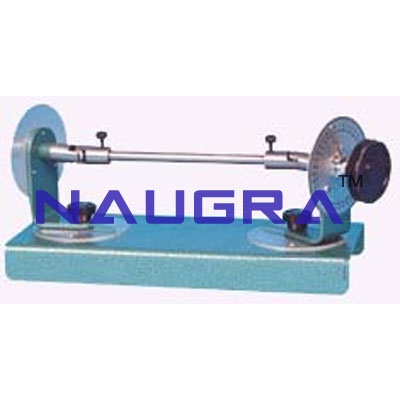- Civil Lab Mechanical Lab Engineering Lab Equipments
- sales@didacticlabequipments.com

CAT NO: DIDACTICNLE-Export-055017
Hooke's Coupling Apparatus- Engineering Lab Training Systems.
Features
Low cost, effective teaching.
Self-contained.
Bench mounted.
Two independent Hooke's joints with
common shaft.
Wide range of shaft misalignment.
Input and output shaft rotations.
measured by protractor scale.
Direct measurement of relative shaft displacements.
Inference of relative shaft velocities and accelerations.
Three year warranty.
Range of Experiments
To observe the relative angular displacement of the shafts at opposite ends of a single and double Hooke's Joint.
To
observe the effect of changing the angles between the axes of the
coupling(s) and shaft on the relative angular shaft displacements
To determine by graphical differentation the relative angular velocities of the shafts
To compare the experimental results with theoretical predictions
Description
The
apparatus consists of an identical Hooke's coupling at each end of a
shaft. The axis of each coupling can be independently varied relative to
the main shaft axis. Each coupling has a pointer and protractor scale
so that the angular difference between the input and output shafts can
be determined for a range of shaft angular positions. A wide variety of
angular settings for single or double couplings is possible.
The couplings are mounted on a free standing pressed steel base.
This
equipment is part of a range designed to both demonstrate and
experimentally confirm basic engineering principles. Great care has been
given to each item so as to provide wide experimental scope without
unduly complicating or compromising the design. Each piece of apparatus
is self-contained and compact. Setting up time is minimal, and all
measurements are made with the simplest possible instrumentation, so
that the student involvement is purely with the engineering principles
being taught. A complete instruction manual is provided describing the
apparatus, its application, experimental procedure and typical test
results
